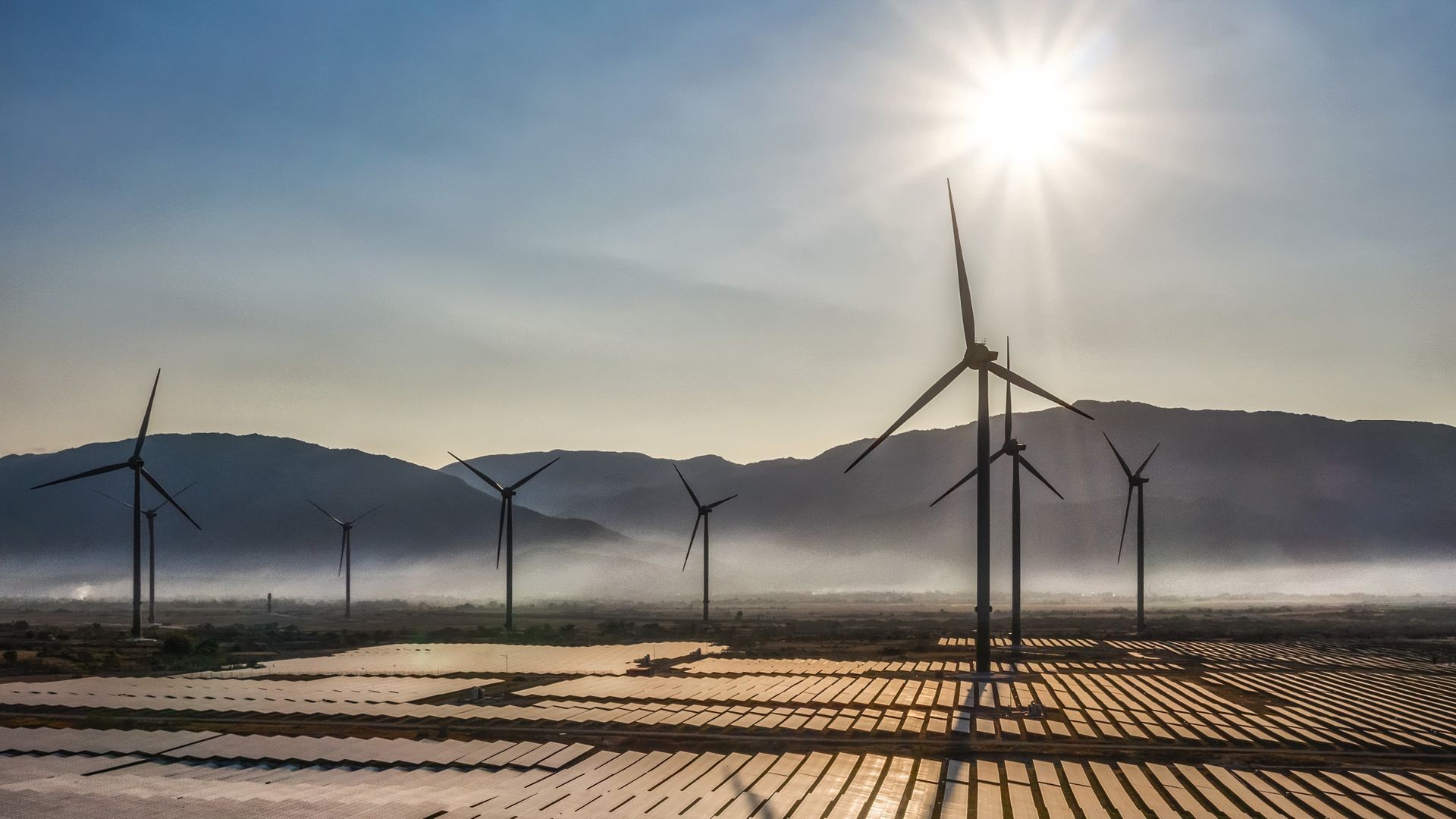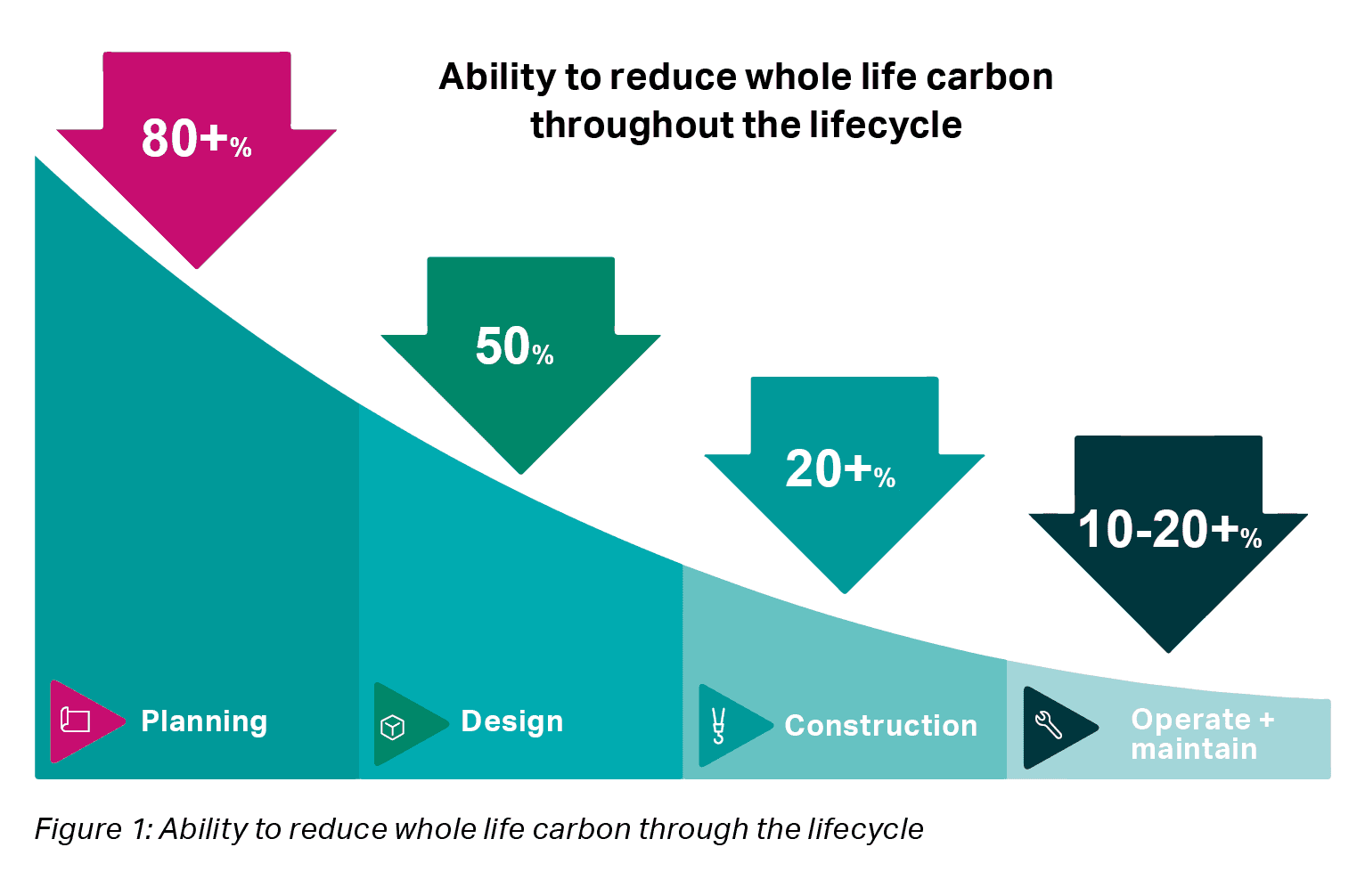
ScopeX™: Accelerating carbon reduction of infrastructure design

ScopeX™ is AECOM's approach to carbon reduction. It is a way of systematizing the methods, workflows and technologies needed to enable decarbonization of the projects we work on. It is also an ambition. Using this approach, we aim to reduce the carbon impact of major planning, design and construction projects by 50 percent compared to industry norms.
This can be as part of a project where decarbonization is an element of the scope (i.e., net zero, sustainable design, etc.) or for any project where we have an opportunity to measurably impact the carbon footprint of the delivered project.
As seen in Figure 1, significant opportunities exist to influence whole life carbon throughout an asset’s lifecycle. The earlier we consider carbon, the more potential impact we can have.
ScopeX™ is both an approach and an ambition: We are changing the way we think and act to consider and balance the carbon impact of our work. Figure 2 outlines the elements of the ScopeX™ approach: client-focused, process driven and enabled by data and digital tools. Fundamental to the approach are conversations with clients to understand carbon reduction commitments, aspirations, constraints and stakeholders. Once we understand our area of influence when it comes to carbon, we need a starting point to help us quantify carbon saving opportunities. We call this a carbon baseline or benchmark.

A baseline can be thought of as our expected carbon emissions without planned reduction measures and is our reference point for demonstrating and tracking savings.
Let’s look at two examples:
- Simple approach to decarbonizing a bridge project
The original base technical concept plans provided with the request for proposal included six new bridges. Our team proposed an alternative concept with four new steel beam bridges, one buried arch structure and the rehabilitation of one of the existing bridges.
We collected environmental product declarations, or EPDs, from local suppliers and also utilized a free embodied carbon database and calculator called EC3. The embodied carbon emissions were reduced across all six bridges with decreases on the individual structures ranging from 31 percent to 74 percent and the total embodied carbon reduction across the six bridges was 54 percent.

- State-of-the-art LEED platinum laboratory building design
We were contracted to design a 110,000 square foot signature lab targeting LEED platinum – the highest possible rating for Leadership in Energy Efficiency and Environmental Design – through a 50 percent energy savings. We parametrically optimized the building geometry for cost-effective performance, then we leveraged AECOMzero, a state-of-the-art AECOM developed net zero carbon design tool. AECOMzero includes a design optimization dashboard that facilitates smart decision-making early in the process.
Rather than optimizing one single strategy, we looked at all strategies at once, from energy conservation through a passive façade, to carbon offset through PV generation. Our workshop- style approach allowed rapid decisions between multiple strategy bundles with their carbon reduction values marked. For this
project, significant carbon reduction was achieved through façade optimization and the inclusion of mass timber.